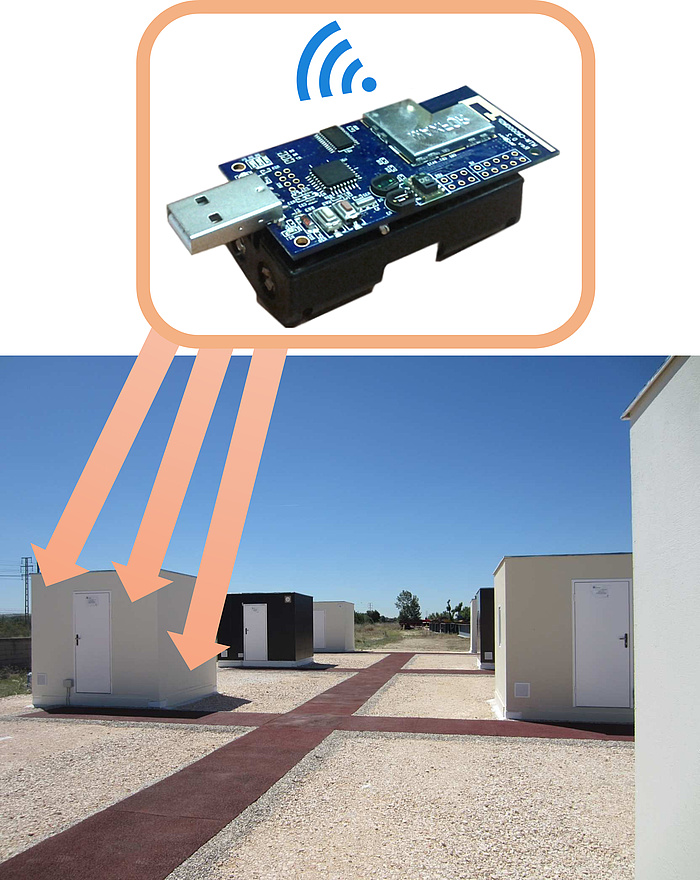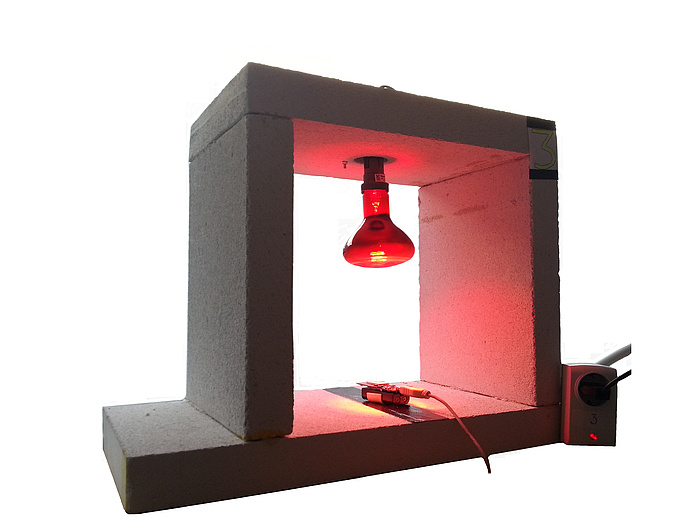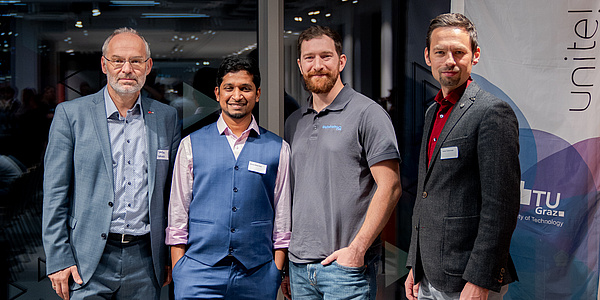Temperature in the Internet of Things

Case study
We have shown in our recent work that even the daily temperature fluctuations commonly found outdoors may compromise the connectivity in a wireless network. In the context of the EU-project “RELYonIT” we carried out a pilot outdoor deployment of a wireless sensor network near Madrid, Spain, in order to monitor how well the insulating materials used for the construction of buildings reduce heat transfer. Wireless sensor nodes were installed on the building façades and exposed to direct sunshine, as shown in Figure 1. Despite using stateof- the-art communication protocols, the overall communication performance turned out to be highly insufficient, with only 61 percent of the packets sent in the network being actually received. The network, however, operated flawlessly during nighttime. It was only during daytime, and more precisely, once the on-board temperature of the sensor nodes reached values higher than 60°C as a result of sun exposure that most of the packets were not received.

Customized testbeds
To systematically study the performance of wirelessly networked embedded devices as a function of temperature variations, we have designed a testbed infrastructure that is able to reproduce the same on-board temperature profiles encountered in the real-world directly on the wireless devices hardware. Such testbed infrastructure, based on remotely controlled, infrared heating lamps placed on top of tens of wireless sensor nodes (see Figure 3) allows experiments to be rerun under identical environmental conditions and shortcomings of state-of-theart communication protocols to be revealed and debugged.
Compensating for the impact of temperature
We are using this testbed facility to benchmark different wireless transceivers embedded in common IoT devices and to devise accurate models capturing the impact of temperature on each specific hardware platform. In most low-power radios, for example, the degradation in link quality as a function of temperature is due to the signal strength attenuation at the low-noise amplifier during reception and at the power amplifier during transmission. A simple linear model parametrized through lab experiments can be used to extend and correct communication protocols such that they can anticipate any fault introduced by temperature variations. With knowledge of the node temperature changes in the neighborhood, wireless sensor nodes can autonomously predict the impact that temperature can have on communication performance and compensate for it by adjusting protocol parameters such as the clear channel assessment threshold. In this way, we can significantly increase the dependability of low-power wireless communications and seamlessly mitigate the environmental impact by means of adaptive communication protocols.
Kontakt
Ass.Prof. Dott. Dott. mag. Dr.techn. MSc
Institute of Technical Informatics
Inffeldgasse 16/I
8010 Graz, Austria
Phone: +43 316 873 6403
<link int-link-mail window for sending>cboano@tugraz.at




